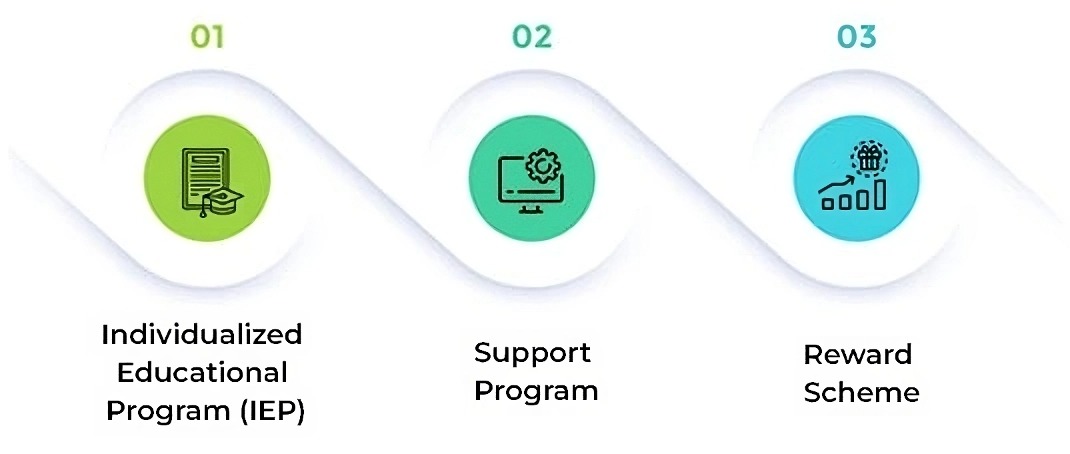“In the classroom, there’s often a desire for all students to keep up with the same learning pace, although this is not always the reality. When some students start to lag behind, remedial instruction comes into play. This approach is designed to support and motivate learners who may be struggling, ensuring they don’t fall behind or develop a sense of failure. Remedial education and courses play a crucial role in today’s educational system, helping students bridge knowledge gaps and attain academic success.”
What Is Remedial Teaching?
When students encounter challenges comprehending classroom topics, various educational strategies come into play, such as enhanced practice, repeated content review, and clarifications. Additionally, in certain instances, individualized attention is offered to facilitate a better understanding of the subject matter. Remedial educators employ effective instructional methods to assist students in overcoming learning hurdles and unlocking their complete academic potential. The majority of these remedial programs are typically implemented during junior high and high school, where students are initially introduced to the fundamental principles of education.
A remedial educator plays a crucial role in guiding students through the foundational aspects of reading, written language, mathematics, and study/organizational skills, employing innovative and multisensory teaching methods. Research has consistently shown that the application of these strategies can result in notable enhancements in student learning outcomes. By being instructed through these well-designed plans and techniques, students not only learn to leverage their strengths, talents, and abilities but also effectively address their weaknesses.
Why Are Remedial Classes And Remedial Education Important?
Remedial classes and remedial education hold significance as they offer vital support to students on their academic journey. When students face difficulties in a specific subject or skill, they may experience discouragement and overwhelm, which can result in reduced motivation and academic performance. Remedial classes step in to provide these students with the necessary tools and assistance to overcome these challenges, ultimately paving the way for their academic triumph.
Moreover, remedial education plays a pivotal role in narrowing the achievement disparity among students coming from diverse socioeconomic backgrounds. Students hailing from low-income households and disadvantaged communities frequently encounter disparities in access to educational resources compared to their more privileged counterparts. Remedial classes enhance educational equity by offering comprehensive support, ensuring that students can thrive academically, irrespective of their socioeconomic circumstances.
What Are The Key Objectives Of Remedial Education?
To aid students who are struggling in comparison to their peers, educators offer learning activities and practical experiences tailored to each student’s skills and specific needs, aligning them with the school’s curriculum and teaching methods.
Teachers should undergo professional training to effectively nurture students’ general skills, encompassing collaboration, problem-solving, student management, communication, self-directed learning, self-regulation, creativity, critical thinking, and proficiency in using information technology.
Furthermore, educators craft customized instructional programs with comprehensive remedial support to assist students in solidifying their foundational knowledge across various subjects. These programs are designed to boost students’ self-confidence, enhance their learning processes, and improve overall learning effectiveness.
Remedial education not only aids students in cultivating positive attitudes and values but also lays the groundwork for lifelong learning, equipping them with the skills necessary for further education and success in the workforce.
Identifying Learning Difficulties:
Remedial instruction initiates by pinpointing the specific learning challenges faced by the student. Once these obstacles are identified, the instructor proceeds to implement remedial strategies while taking these issues into careful consideration. These challenges encompass:
- Limited comprehension abilities.
- Challenges in retaining information effectively.
- Struggles in comprehending and executing instructions.
- Insufficient motivation toward the learning process.
- The requirement for additional time to complete certain tasks.
- Difficulty grasping intricate concepts.
- Issues in problem-solving.
- A lack of self-confidence accompanied by minimal self-expectations.

Individualized Educational Program (IEP):
The Individualized Educational Program (IEP) is designed to cater to each student’s unique learning requirements, with the primary goal of strengthening foundational learning, overcoming learning obstacles, and unlocking their full potential. Remedial teaching strategies encompass various approaches, such as Remedial Reading Methods, Promoting Daily Reading, Focusing on Comprehension, and Incorporating Fun and Games.
Within the IEP, it’s crucial to outline both short-term and long-term instructional objectives, learning milestones, exercises, and assessments to ensure effective curriculum implementation. Teachers should continually assess the success of these strategies and actively seek student feedback for ongoing improvement.
Support Program:
Educators have the opportunity to train high-achieving students in a particular subject to act as “peer tutors,” providing support to classmates facing learning challenges both in and outside of the classroom. These peer assistance initiatives are instrumental in enhancing students’ expertise in the subject matter, nurturing their communication and teamwork skills, and cultivating a positive social atmosphere within the learning environment.
Reward Scheme:
Educators should establish a reward system that motivates students to set their own goals and develop personalized plans, all while acknowledging and commending their accomplishments in reaching high academic standards. When crafting these incentives, teachers should consider the following factors:
- Define clear and precise goals.
- Set achievable objectives.
- Provide a variety of incentives that align with students’ interests, and promptly distribute rewards. Additionally, regularly evaluate and refresh the incentive structure.
- Encourage parental involvement in assisting children with their homework, which can be highly beneficial.
What To Look For In A Remedial Program?
When assessing remedial programs for students, it’s essential to recognize that not all programs are equally effective. Effective remedial measures encompass:
- Utilizing proven teaching techniques grounded in evidence-based practices.
- Providing step-by-step guidance at the student’s pace, ensuring comprehensive coverage of the content.
- Regularly assessing student progress and reinforcing their learning through quizzes and practice.
- Implementing a system for evaluating students’ experiences and readiness to advance.
- Employing alternative teaching methods to enhance comprehension, especially if the initial approach was ineffective.
- Offering guidance in small groups to promote personalized attention and focus.
In a successful remedial program, a qualified instructor with specialized expertise takes charge of the instruction. This is especially crucial for children with learning and cognitive disabilities. It’s advisable to inquire with the school about the qualifications of the instructor overseeing your child’s remedial program to ensure they have received appropriate training.
How To Handle A Student’s Behavioral Issues?
When addressing student behavior challenges, teachers should consider the following:
- Consistently monitor students’ academic progress and their behavior in group settings.
- Facilitate discussions with students to help them grasp the impact of their actions on themselves and others.
- Foster a strong teacher-student relationship, building trust, and actively listening to their perspectives.
- Assist students in developing a positive self-image and a strong sense of self-esteem.
- Maintain open communication with parents to understand the root causes of their children’s behavioral issues.
- Recognize and reward students who exhibit appropriate behavior, reinforcing positive conduct.
- If behavioral problems persist or worsen, refer students to counselors or specialized educators for additional support and intervention.
How To Design A Remedial Teaching Program?
It’s worth noting that not all remedial education approaches prove effective for every student. When devising a program, consider the following principles:
- Utilize proven teaching strategies with a track record of success. Maintain a systematic, step-by-step approach, ensuring comprehensive coverage of the material while accommodating the student’s learning pace.
- Establish a robust evaluation system for students, allowing for informed decisions regarding the continuation of lessons.
- Incorporate assessments and practice exercises to facilitate retention of learned material.
- Whenever possible, provide instructions in small groups to allow for personalized guidance.
- Offer a range of instructional methods to accommodate learners who may not grasp the material initially.
Guidelines For Effective Remedial Teaching Programs:
The teacher’s role is paramount in remedial programs, and these principles can serve as guiding foundations for crafting effective remedial initiatives. Let’s delve into them:

Preparation:
Prior to creating lessons, it is essential to dedicate ample effort to identifying the diverse learning needs of each student. This forms the basis for developing teaching strategies that optimize student learning.
Learning Environments:
Designing engaging learning environments, such as gamified experiences, and adopting a more informal teaching style can foster initiative and ignite enthusiasm for learning.
Learning Exercises:
Remedial educators should provide a substantial number of learning exercises to aid students in nurturing their latent learning capacities and problem-solving skills. A series of shorter exercises may be more effective than a single lengthy one.
Clear Directions:
Considering that written language can be challenging for students with learning disabilities, it is crucial for teachers to offer unambiguous and straightforward instructions to prevent confusion.
Teaching Strategies:
Introduce abstract concepts after presenting specific examples. Employ uncomplicated, step-by-step approaches and adapt the pace to suit each student. Utilize teaching aids and leverage information technology and other educational resources as valuable tools.
Moreover, in line with the National Education Policy (NEP) 2020, remedial education plays a pivotal role in bridging learning gaps. The NEP proposes the implementation of remedial education programs to assist students facing difficulties in reading and math. These programs are designed to ensure that no student is left behind, providing equal opportunities for success in school for all.
Visit our campus to witness the Montessori Primary and High School for your kids.
